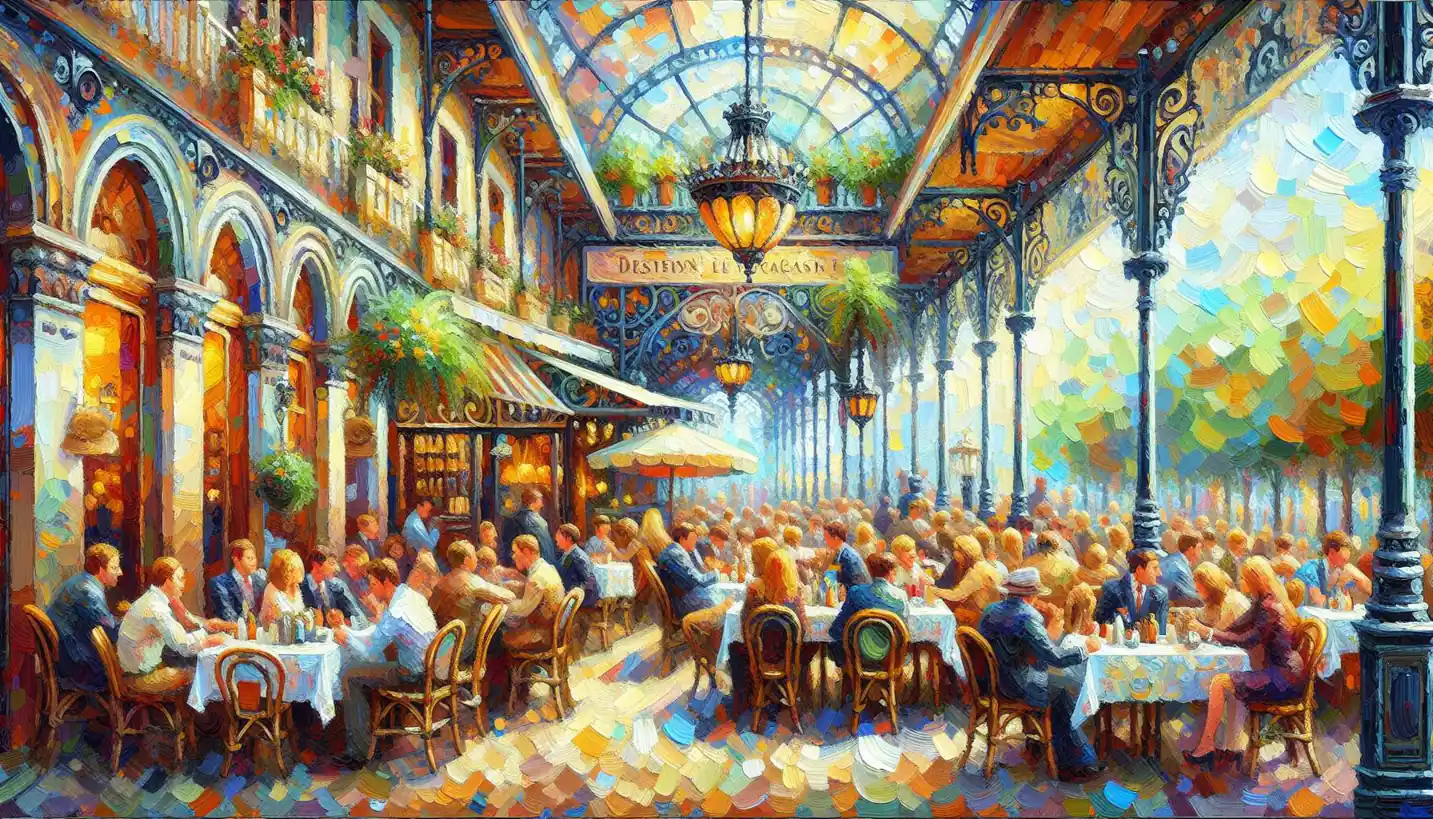· Art · 4 min read
Sonic Installation: Creating Immersive Soundscapes in Art
Sonic installation creates immersive soundscapes that transform spaces into living pieces of art. Discover how sound can entirely change your perception of a room.

In the world of art, sound can be as captivating as visuals. Sonic installations take sound to a whole new level, crafting immersive experiences that make us rethink how we interact with art. Let’s dive into the fascinating realm of sound art and explore the magic behind sonic installations.
Sound. It’s everywhere, constantly accompanying us, whether it’s the rustle of leaves, the hum of a bustling street, or our favorite tune playing softly in the background. But what if sound wasn’t just a background element? What if it took center stage in art? Enter the world of sonic installations, where artists use sound as their primary medium to craft an experience.
The Birth of Sound Art
Sound art isn’t as new as you might think. Its roots trace back to the early 20th century. Avant-garde movements like Dada and Futurism experimented with unconventional forms of art, including noise and sound. Luigi Russolo, an Italian Futurist, famously declared a “Futurist Manifesto” on noise, urging artists to embrace the sounds of modern life.
Fast forward to the 1960s and 70s, and sound art began to emerge more prominently with the rise of experimental music and artists like John Cage, who challenged traditional notions of music and sound. Cage’s exploration of silence and incidental sounds laid the groundwork for what would become sonic installations.
What is a Sonic Installation?
A sonic installation is a specific form of sound art. Picture walking into a room where the sound washes over you from all directions. It’s like stepping into a different world—a soundscape crafted to interact with you and the space around you. Unlike traditional music, which is often linear and time-bound, sonic installations can loop, evolve, and respond to the audience’s movements.
These installations often inhabit spaces like galleries, museums, or outdoor areas, transforming them into auditory playgrounds. Artists might use speakers, various instruments, voice, and even technology like sensors to create these experiences.
Creating an Immersive Experience
The key to sonic installations is immersion. Artists aim to envelop the listener in a sound environment, making them a part of the experience rather than a passive observer. Think of it as a 3D experience but for your ears.
To achieve this, artists work with the concept of spatial sound. By placing speakers in strategic locations and adjusting sound levels, they create a sense of depth and movement. Sounds might come from behind, above, or in a swirl around the listener, making them feel like they’re inside the art piece.
The Role of Technology
Technology plays a crucial role in bringing sonic installations to life. From sophisticated sound systems to interactive elements, technology allows artists to push boundaries and create dynamic soundscapes.
For instance, some installations use sensors to detect the presence and movement of visitors. This information can be used to alter the sound in real-time, making each visit unique. Others might employ computer programming to generate or modify sound patterns, creating a living, breathing sound environment.
Famous Sonic Installations
Around the world, there have been some truly remarkable sonic installations that have captured the imagination of audiences.
One iconic example is Janet Cardiff’s “The Forty Part Motet,” where forty speakers play individual voices from a choral ensemble, allowing visitors to walk among the singers and experience the music from different perspectives.
Another fascinating piece is by sound artist Zimoun, known for installations using everyday objects driven by motors. His works often create rhythmic, immersive soundscapes that fill spaces with a sense of movement and life.
Personal and Emotional Connection
Sonic installations often evoke a strong personal and emotional response, making us question the way we perceive sound. The immersive nature allows for introspection and deep connection with the art. It can evoke memories, emotions, and even provoke thought about the world and space we occupy.
There’s something magical about how sound can change our perception of an environment. It makes us aware of the unseen elements in our world, turning the mundane into something extraordinary.
The Future of Sonic Installations
As technology advances, the future of sonic installations looks promising and exciting. Virtual and augmented reality are opening new avenues for artists to explore sound in three-dimensional spaces. Imagine experiencing a sonic installation from the comfort of your home, where soundscapes adapt to your environment and mood.
Moreover, the integration of artificial intelligence might lead to installations that learn and adapt over time, crafting personalized sound journeys for each listener. These advancements will allow artists to push further, creating richer, more complex auditory experiences.
Sonic installations, with their immersive soundscapes, are a reminder of the incredible power of sound in art. They invite us to listen more deeply and engage with our surroundings in new and unexpected ways. As this fascinating field continues to evolve, it’s poised to change how we experience art—and the world around us—in profound ways.


